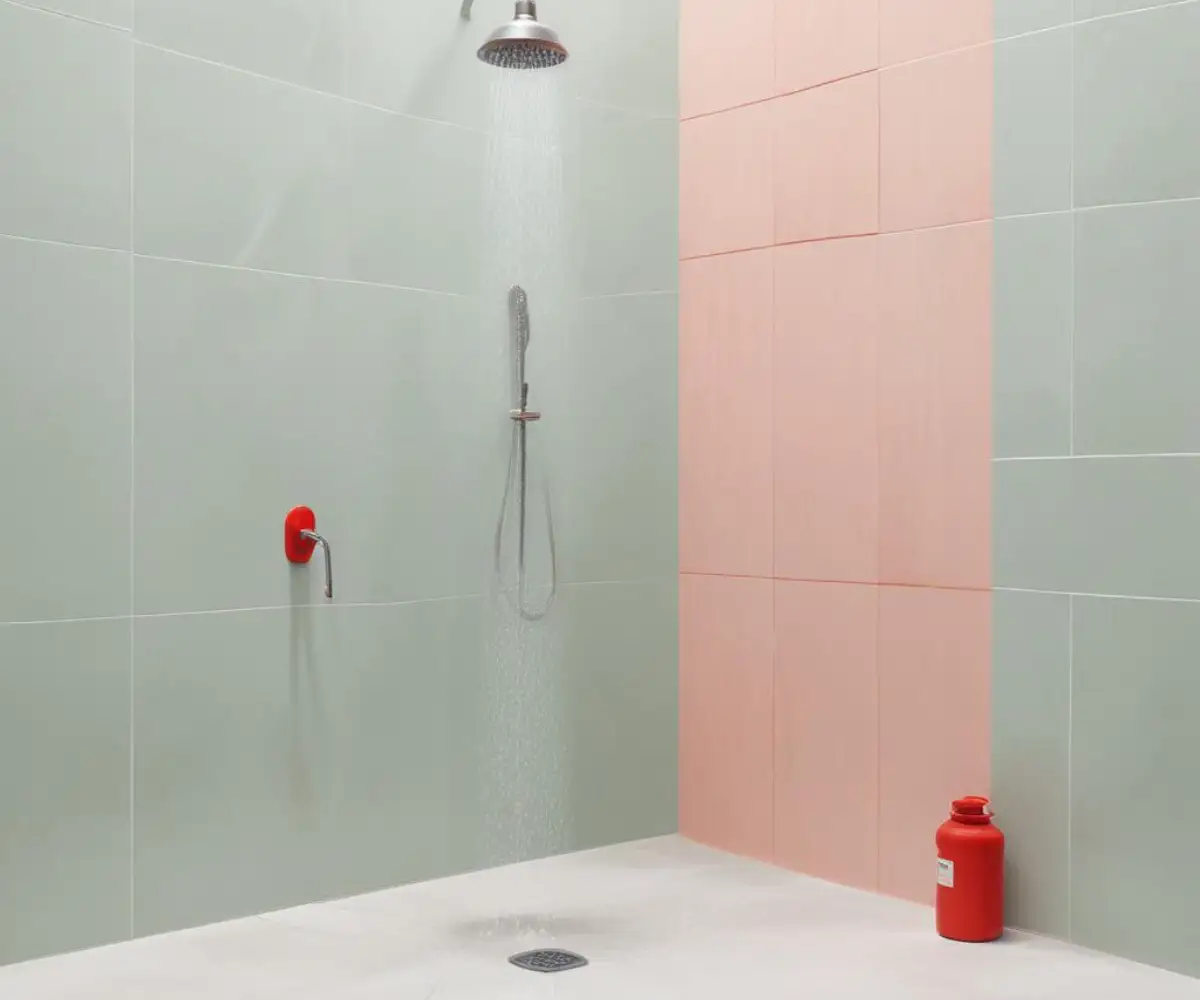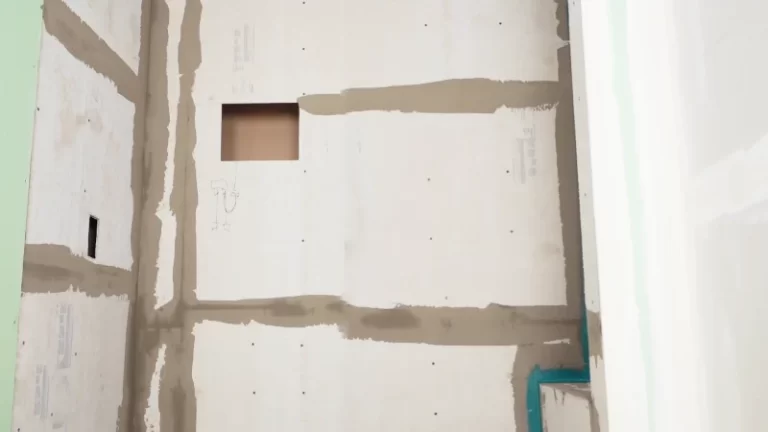RedGard vs Drylok: Don’t Choose the Wrong Waterproofing Armor
Choosing a waterproofing product feels like a high-stakes decision because it is. One wrong choice can lead to catastrophic water damage, insidious mold growth, and repairs that drain your bank account. Two names dominate the shelves: the bright, unmistakable RedGard and the trusted, hardworking Drylok.
Many people mistakenly believe these products are interchangeable, leading them to use a basement sealer in a shower or a shower membrane on a damp foundation wall. This guide will dissect the fundamental differences between RedGard and Drylok, ensuring you select the right product for the right job and avoid a waterproofing disaster.
You'll Learn About
What is RedGard? The Flexible Surface Shield
RedGard is a liquid-applied elastomeric waterproofing membrane. Think of it as a thick, seamless, rubber-like coating that you paint or roll onto a surface. Its primary job is to create a continuous, flexible barrier that sits on top of a substrate to prevent water from ever reaching it.
This product is specifically designed for applications where it will be covered by tile or stone. It’s famous for its role in modern shower construction, where it’s applied over cement backer board. Beyond just blocking water, its elastomeric nature gives it flexibility, allowing it to function as a crack-isolation membrane, preventing minor substrate cracks from transferring to your expensive tile.
Key Characteristics of RedGard:
- Composition: A liquid latex-based polymer that cures into a durable, flexible sheet.
- Primary Function: Topical waterproofing and crack isolation for surfaces under tile.
- Application Method: Applied with a roller, trowel, or sprayer to create a continuous film.
- Flexibility: Highly flexible, allowing it to bridge minor in-plane cracks and accommodate slight movement.
What is Drylok? The Penetrating Masonry Waterproofer
Drylok, on the other hand, is a very different kind of product, best described as a heavy-duty masonry waterproofer. It is specifically formulated to penetrate into the microscopic pores of bare concrete, brick, and other masonry surfaces. Once inside, it expands and cures, creating a watertight barrier within the masonry itself.
Its main purpose is to stop water seepage through foundation walls, basement walls, and retaining walls. Drylok is engineered to withstand significant hydrostatic pressure—the immense force of groundwater pushing against a foundation from the outside. This makes it a go-to solution for damp basements where moisture is being forced through the concrete from the soil.
Key Characteristics of Drylok:
- Composition: Typically a latex-based formula, sometimes with cementitious additives, designed to bond with and seal masonry.
- Primary Function: Penetrates and seals masonry pores to block water under hydrostatic pressure.
- Application Method: Applied with a thick-napped roller or heavy-duty brush, forcing it into the masonry’s surface.
- Flexibility: Generally rigid once cured; it is not designed to bridge cracks or handle substrate movement.
The Core Showdown: RedGard vs Drylok Head-to-Head
Understanding the fundamental difference in how they work—RedGard as a surface film and Drylok as a penetrating sealer—is the key to using them correctly. Using one where the other is required is a recipe for failure. Let’s break down their critical distinctions.

Application Surface (Substrate) is Everything
This is the most crucial point of differentiation. RedGard is designed for tile backing surfaces like cement board, fiber cement board, and exterior-grade plywood. It creates an ideal bonding surface for thin-set mortar.
Drylok is exclusively for bare, porous masonry surfaces. This includes concrete blocks, poured concrete walls, brick, and stucco. Applying it over painted or sealed surfaces will prevent it from penetrating and lead to failure. It is not intended to be a surface for tile adhesive.
Handling Water Pressure: Positive vs. Negative Side
Water pressure is directional, and this dictates which product to use. RedGard is a “positive-side” waterproofer. This means it’s applied to the side of the wall where the water originates, like the inside of a shower, blocking water before it enters the wall assembly.
Drylok excels as a “negative-side” waterproofer. It’s applied to the dry side of a wall (like your interior basement wall) to stop water being pushed through from the outside soil. It is specifically formulated to resist this inward pressure, a condition where RedGard would likely fail by delaminating from the surface.
Flexibility and Crack Isolation
Buildings move. Foundations settle. This is where RedGard’s elastomeric properties are a massive advantage in certain applications. It can stretch and move with the substrate, isolating the tile above from cracks up to 1/8 inch.
Drylok cures to a hard, rigid finish. If the underlying concrete wall develops a new crack, the Drylok coating will crack right along with it, creating a new path for water intrusion. It offers no crack-isolation benefits.
Feature Comparison: RedGard vs Drylok at a Glance
To simplify the decision-making process, here is a direct comparison of the most important features of each product.
| Feature | RedGard | Drylok |
|---|---|---|
| Primary Use Case | Showers, tub surrounds, under-tile applications (floors/walls) | Basement walls, foundations, retaining walls, bare masonry |
| Mechanism | Forms a topical, elastomeric membrane on the surface | Penetrates and seals pores within the masonry |
| Substrate Compatibility | Cement board, fiber cement board, gypsum board (dry areas), concrete | Bare/unpainted concrete, brick, stucco, cinder block |
| Water Pressure Type | Positive-side waterproofing (e.g., inside a shower) | Negative-side waterproofing (resists hydrostatic pressure) |
| Flexibility | Excellent; provides crack isolation | Rigid; will not bridge moving cracks |
| Use Under Tile? | Yes, specifically designed for this | No, not a suitable bonding surface for thin-set |
| Vapor Barrier? | Yes, when applied to the required thickness | Yes, it reduces vapor transfer |
RedGard vs Drylok in a Shower: A Critical Error to Avoid
A frequent and dangerous mistake is using Drylok on shower walls before tiling. Contractors or DIYers may be tempted by its “waterproofer” name and lower cost, but this is a critical misapplication. Drylok is not designed to have tile bonded to it. The thin-set mortar used for tile will not adhere properly to a Drylok-coated surface, leading to loose tiles and catastrophic failure.
For any tiled wet area like a shower, RedGard is the appropriate choice between the two. It provides the necessary waterproof barrier and a surface that is specifically designed for excellent mortar adhesion, making it a core component of the best shower waterproofing system. When considering shower systems, it’s also helpful to compare other professional options, as detailed in the Red Guard Waterproofing vs Kerdi showdown.
RedGard vs Drylok for Basement Walls: The Right Tool for the Job
When it comes to interior basement walls experiencing dampness, Drylok is the clear winner. Its ability to penetrate the concrete and withstand negative-side hydrostatic pressure is precisely what’s needed to keep a basement dry. Applying RedGard to the inside of a damp basement wall would be pointless; the moisture pressure from behind would simply push it off the wall.
It’s crucial to address the source of the water. If you simply coat a damp wall, you risk trapping moisture, which can lead to other issues. Understanding the relationship between Drylok and mold is key; while Drylok stops water, you must first eliminate any existing mold and ensure the wall is properly prepared.
Advanced Insights: Why They Work So Differently
The performance differences are rooted in their chemistry. RedGard is primarily a styrene-butadiene (SBR) latex co-polymer. When it cures, these polymers link together to form a continuous, non-porous, and highly flexible film that water molecules simply cannot pass through.
Drylok’s formula is designed to react with the alkaline components of masonry. It enters the capillary network of the concrete and, as it cures, forms insoluble crystalline structures that physically plug these pathways. This is why it must be applied to a bare, porous surface to function correctly.
Understanding Failure Modes
Knowing how each product fails provides insight into their proper use. RedGard typically fails due to a breach in its continuous membrane—a puncture, improper seam treatment, or delamination caused by applying it over a dusty surface or being pushed off by negative-side water pressure.
Drylok failure usually occurs when the substrate itself fails. If the hydrostatic pressure is too high, it can cause the surface layer of the concrete to spall, taking the Drylok with it. It also fails if applied over old paint or efflorescence (salt deposits), which prevents it from getting the deep bond it needs.
Common Application Mistakes and Pro Tips
Even the best products will fail if applied incorrectly. Following manufacturer instructions is non-negotiable.
RedGard Pro Tips:
- Don’t apply it too thin. A wet film gauge is essential to ensure you achieve the required thickness for waterproofing. Two or more coats are almost always necessary.
- Prime porous surfaces. On very absorbent substrates like fresh cement board, priming with a diluted coat of RedGard (per instructions) prevents the main coats from drying too quickly, ensuring a better bond.
- Address the seams. All seams and changes of plane (corners) on the backer board must be pre-treated with thin-set mortar and alkali-resistant mesh tape before applying RedGard.
Drylok Pro Tips:
- Surface prep is paramount. The masonry must be completely bare and clean. All old paint must be removed, and efflorescence must be scrubbed away with a stiff brush and proper cleaner.
- Patch all holes first. Use a quality hydraulic cement to fill any active leaks, cracks, or holes before applying the main coat.
- Work it in. The first coat must be worked thoroughly into the pores of the masonry with a stiff brush or a very thick-napped roller. Don’t just paint the surface; force the product into it.
The Final Verdict: Two Different Tools for Two Different Jobs
The debate of RedGard vs. Drylok isn’t about which product is better overall, but which is correct for your specific project. They are both top-tier products designed for entirely different challenges. They are not, and should never be considered, interchangeable.
Choose RedGard for creating a flexible, impenetrable surface barrier under tile in showers, bathrooms, and on floors. It is the shield that protects your wall structure from the water it will face directly.
Choose Drylok for sealing bare masonry walls in basements and foundations against moisture trying to force its way in from the outside. It is the internal seal that becomes one with your concrete to fight hydrostatic pressure.
Making the right choice from the start saves you from the immense cost, time, and stress of a waterproofing failure. By understanding the core purpose of each product, you can arm your project with the correct defense and ensure a dry, durable, and long-lasting result.

